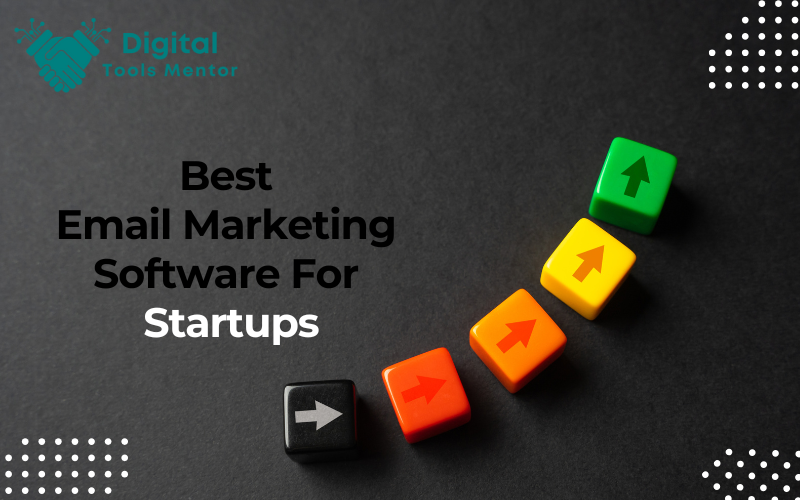9 Best Email Marketing Software For Startups in 2025
In today’s fast-paced digital landscape, startups cannot afford to ignore the power of email marketing as a channel for growth. Despite the rise of social media and other digital marketing avenues, email remains a highly effective and cost-efficient way to engage customers, nurture leads, and build brand loyalty. But as a startup, you don’t have the luxury of time to sift through dozens of tools to find the one that’s just right for you. That’s why we’ve done the heavy lifting for you. In this comprehensive guide, we’ve rounded up the 9 best email marketing software for startups, comparing features, pricing, and ease-of-use to help you make an informed decision. Let’s dive into best email marketing software for startups!
9 Best Email Marketing Software For Startups in 2025
1. Brevo
Brevo is the best email marketing software For startups that are new to the email marketing scene and need a straightforward, user-friendly platform. Its intuitive interface makes it easy to create stunning email templates, manage your contact lists, and set up automated workflows. The software offers robust analytics, ensuring startups can keep an eye on key metrics like open rates, click-through rates, and conversions. With a competitive pricing model that grows with your subscriber list, Brevo is a cost-effective choice for young companies.

Brevo Features
- Intuitive Interface: User-friendly dashboard that simplifies email campaign setup and management.
- Template Library: A variety of customizable, pre-made email templates for various business needs.
- Automated Workflows: Allows for the creation of automated email sequences based on triggers and user behavior.
- Analytics Dashboard: Comprehensive metrics on open rates, click-through rates, and conversions for performance tracking.
Brevo Pros
- Extremely intuitive interface, perfect for beginners in email marketing.
- Offers a pricing model that is friendly to startups, allowing for scaling as the business grows.
- Provides a detailed analytics dashboard for monitoring campaign success and adjusting strategies.
Brevo Cons
- May not offer the depth of features desired by larger or more advanced users.
- Compared to other platforms, the template selection is somewhat limited.
Brevo Pricing
| Plan | Price per Month |
| Free | $ 0 |
| Starter | $ 25 |
| Business | $ 65 |
| Brevo Plus | Custom Pricing |
2. GetResponse
GetResponse is a multifaceted tool that goes beyond basic email marketing to offer webinars, landing pages, and advanced automation features. The platform is equipped with a drag-and-drop email editor and pre-designed templates that make creating emails a breeze. Its high-level analytics and A/B testing capabilities make it a great fit for startups focused on optimizing and scaling their email campaigns.
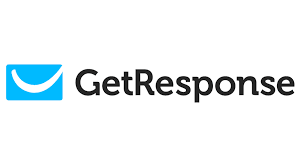
GetResponse Features
1. Drag-and-Drop Editor
Easy-to-use email editor that eliminates the need for coding skills.
2. Advanced Automation
Features include autoresponders, automated campaigns, and advanced segmentation.
3. Multi-Channel Capabilities
In addition to email, offers webinar hosting, landing pages, and eCommerce features.
4. A/B Testing
Allows you to test different versions of emails to optimize performance.
GetResponse Pros
- Beyond email marketing, the platform also offers webinars, landing pages, and eCommerce capabilities.
- Offers autoresponders, advanced campaign automation, and segmentation.
- Comprehensive A/B testing options for optimizing email campaigns.
GetResponse Cons
- With so many features, the platform can become overwhelming for new users.
- As you add more features and grow your contact list, pricing can become relatively high.
GetResponse Pricing
There are six pricing plans:
| Plan | No. of Contacts | Price per Month |
| Free | 500 | $ 0 |
| Basic | 1000 | $ 19 |
| Plus | 1000 | $ 59 |
| Professional | 1000 | $ 119 |
| Max | – | Custom Pricing |
| Max2 | – | Custom Pricing |
3. HubSpot
HubSpot’s Email Marketing tool is part of a larger suite of marketing automation and CRM products, making it best email marketing software for startups looking for an all-in-one solution. With its user-friendly design, HubSpot allows for easy personalization and segmentation, enabling startups to create highly targeted campaigns. Its integration with other HubSpot tools makes tracking the customer journey incredibly seamless.

HubSpot Features
1. All-in-One Suite
Comprehensive tool that integrates email marketing with CRM, lead generation, and customer service.
2. Personalization and Segmentation
Advanced features to send targeted emails based on user behavior and data.
3. Seamless Integration
Integrates easily with other HubSpot tools for a unified view of the customer journey.
4. Performance Analytics
Real-time analytics that track email performance, website engagement, and conversions.
HubSpot Pros
- Offers a comprehensive suite of marketing, sales, and service tools.
- Effortlessly integrates with other HubSpot tools and external platforms.
- Can grow with your business, adding functionalities as needed.
HubSpot Cons
- One of the more expensive options, particularly as you start adding more features.
- Due to its comprehensive nature, it may require a longer time to master all functionalities.
HubSpot Pricing
There are 3 pricing plans:
| Plan | Price per Month |
| Free | $ 0 |
| Starter | $ 18 |
| Professional | $ 800 |
4. ClickFunnels
ClickFunnels specializes in creating effective sales funnels, and its email marketing capabilities are designed to complement that. Startups can easily upsell, downsell, and follow up with customers through automated sequences. The platform is perfect for startups that want to not only engage customers but also drive them towards making a purchase.

ClickFunnels Features
1. Sales Funnel Optimization
Designed to create and manage entire sales funnels, including email sequences.
2. Upsell and Downsell Features
Enables the creation of automated upsell and downsell campaigns within the email workflow.
3. Landing Page Integration
Allows you to build and link landing pages to capture more leads.
4. Pre-Made Funnel Templates
Offers a library of pre-designed funnel templates for quicker setup.
ClickFunnels Pros
- Designed to optimize every stage of the sales funnel.
- Built-in upsell and down sell features to maximize revenue.
- Allows seamless integration with landing pages to improve lead capture.
ClickFunnels Cons
- Can be expensive, especially for startups with limited budgets.
- While strong in sales funnels, it may lack in-depth email marketing features.
ClickFunnels Pricing
| Plan | Price Per Month |
| Basic | $ 147 |
| Pro | $ 197 |
| Funnel Hacker | $ 297 |
5. Flodesk
Flodesk is the go-to software for startups looking for visually appealing email designs. With its focus on aesthetics and easy-to-use design features, startups can create emails that truly stand out. Although it may lack some of the advanced automation features, its simplicity and focus on design make it a compelling choice for creative startups.

Flodesk Features
1. Visual Email Design
Focuses on delivering visually appealing emails with a wide range of design options.
2. Simple Drag-and-Drop Editor
Allows for easy customization of email templates.
3. Subscriber Segmentation
Basic segmentation features for targeted campaigns.
4. Mobile Responsiveness
Emails automatically adapt to different screen sizes for optimal viewing.
Flodesk Pros
- Prioritizes the visual aspect of email marketing.
- Very user-friendly, especially for those without technical skills.
- Automatically optimizes emails for mobile viewing.
Flodesk Cons
- Lacks some of the automation and analytics features of other platforms.
- Primarily catered to creative businesses, which might not suit all types of startups.
Flodesk Pricing
| Plan | Price per Month |
| $ 38 | |
| Checkout | $ 38 |
| Everything | $ 64 |
6. ActiveCampaign
ActiveCampaign combines email marketing, automation, sales automation, and CRM. It excels in customer experience automation, segmenting contacts based on their behavior, preferences, and previous interactions with your website. This allows startups to send personalized messages that engage and convert, making it a robust tool for startups with aggressive growth strategies.
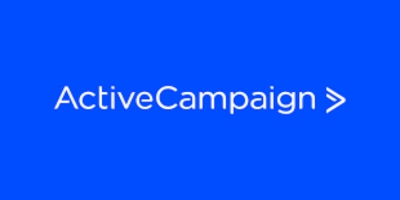
ActiveCampaign Features
1. Customer Experience Automation
Combines email marketing, automation, and CRM for a 360-degree customer view.
2. Advanced Segmentation
Segment contacts based on behavior, location, and custom attributes.
3. Multichannel Marketing
In addition to email, supports SMS, Facebook Custom Audiences, and more.
4. Machine Learning
Utilizes machine learning to predict the best times to send emails.
ActiveCampaign Pros
- Excellent at segmenting lists for highly targeted marketing.
- Offers a 360-degree view of customer interactions.
- Beyond email, also includes SMS and social media advertising.
ActiveCampaign Cons
- Could be overwhelming for beginners due to its range of features.
- The advanced features come at a cost, making it more expensive for startups.
ActiveCampaign Pricing
| Plan | Price per Month |
| Lite | $ 29 |
| Plus | $ 49 |
| Professional | $ 149 |
| Enterprise | Custom Pricing |
7. MailerLite
For startups on a budget, MailerLite offers an affordable yet powerful platform. The software provides a range of features including email automation, landing pages, and pop-ups, all within an easy-to-use interface. Its focus on simplicity and ease-of-use makes it a great starting point for startups unfamiliar with email marketing.

MailerLite Features
1. User-Friendly Interface
Designed for ease of use, especially for those new to email marketing.
2. Cost-Effective Plans
Affordable pricing structures with features usually found in more expensive tools.
3. Automation and Sequences
Easy setup for automated email campaigns and drip sequences.
4. Built-In Landing Pages
Provides tools to create landing pages and pop-ups within the platform.
MailerLite Pros
- One of the most cost-effective solutions available.
- User-friendly interface, ideal for those new to email marketing.
- Includes landing page and pop-up creation within the platform.
MailerLite Cons
- Doesn’t offer as in-depth analytics as some other platforms.
- While available, support isn’t as robust as that of other platforms.
MailerLite Pricing
| No. of Contacts | Price Per Month |
| 1000 | $ 0 |
| 2500 | $ 17 |
| 5000 | $ 32 |
| 10,000 | $ 54 |
| 50,000 | $ 87 |
8. Moosend
Moosend offers a range of features like email automation, analytics, and subscription forms with a focus on ease of use and scalability. Its drag-and-drop email editor and template library make it easy for startups to create professional emails. With no coding required and an affordable pricing structure, Moosend is accessible for startups of all sizes.
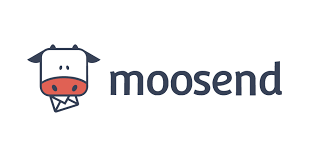
Moosend Features
1. Drag-and-Drop Editor
Makes it simple to create professional emails without needing to code.
2. Email Automation
Offers a range of pre-made automation templates for different business needs.
3. Real-Time Analytics
Tracks email campaign performance in real-time.
4. List Segmentation
Easily segment your subscriber list for more targeted email marketing.
Moosend Pros
- Simple, intuitive interface for ease of email creation.
- Offers competitive pricing with a feature-rich free tier.
- Provides insightful metrics in real-time for quick adjustments.
Moosend Cons
- Doesn’t offer as many third-party integrations as other platforms.
- The design templates are functional but relatively basic.
Moosend Pricing
| No. of Subscribers | Price Per Month |
| 0-500 | $ 9 |
| 501-1000 | $ 16 |
| 1001-2000 | $ 24 |
| 2001-3500 | $ 32 |
| 3501-5000 | $ 48 |
| 5001-8000 | $ 64 |
| 8001-10,000 | $ 88 |
9. Engagebay
Engagebay is a comprehensive platform offering marketing, sales, and customer service features. For startups in need of a holistic approach to customer engagement, this tool provides robust email marketing functionalities alongside other essential business operations. Its range of templates, automation features, and analytics make it a powerful tool for startups that are looking for an end-to-end business solution.
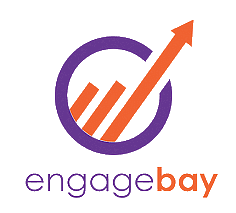
Engagebay Features
1. End-to-End Business Solution
Offers marketing, sales, and customer service features in one platform.
2. Automated Campaigns
Allows for the automation of multi-step, multi-channel campaigns.
3. Lead Scoring and Segmentation
Uses data analytics to score and segment leads for more targeted marketing.
4. 360-Degree Customer View
Consolidates customer interactions across all channels for a holistic understanding.
Engagebay Pros
- Offers an all-in-one platform for marketing, sales, and customer service.
- Advanced analytics for lead qualification and targeting.
- Robust automation features for multi-step, multi-channel campaigns.
Engagebay Cons
- With so many features, it can take time to learn the platform.
- For startups focused only on email marketing, the range of features may be excessive.
Engagebay Pricing
| Plan | No. of Contacts | Price per Month |
| Free | 250 | $ 0 |
| Basic | 500 | $ 12.74 |
| Growth | 5000 | $ 42.49 |
| Pro | Unlimited | $ 84.99 |
Best Email Marketing Software For Startups: Final Thoughts
Choosing the best email marketing software for startups is crucial, aiming to grow and maintain strong customer relationships. The landscape of email marketing tools offers a variety of options, each with its unique set of features, pros, and cons. Whether you’re a startup focused on creating visually captivating emails, diving deep into customer segmentation, or looking for an all-in-one solution, there’s a platform tailored for your needs. Be sure to consider your specific business objectives, budget constraints, and desired level of customization before making your choice. Taking the time to select the software that aligns with your startup’s goals can make all the difference in successfully scaling your email marketing efforts.
Is email marketing easy?
Email marketing can be as easy or as complex as you make it. While basic campaigns can be straightforward, the field has enough depth to offer a learning curve for those looking to specialize.
- Complexity Depends on Goals and Tools:
The ease of email marketing can vary depending on your marketing objectives and the complexity of the campaigns you want to run.
- Basic Campaigns are Generally Easy:
Setting up basic campaigns, such as newsletters or single-step autoresponders, is usually straightforward and can often be accomplished quickly.
- Templates and Drag-and-Drop Editors:
Many email marketing platforms offer templates and drag-and-drop editors that make it simple to design professional-looking emails without any coding skills.
- Automated Workflows Require Planning:
Creating more complex automated workflows can require a deeper understanding of both your audience’s behavior and the tool you are using.
- Segmentation and Personalization:
Segmenting your email list for more personalized messaging can make campaigns more effective but adds an additional layer of complexity.
- Data Analysis is Key:
Understanding analytics and A/B testing results is crucial for optimizing email campaigns, and this can be difficult for those not familiar with data interpretation.
- Compliance and Best Practices:
Adhering to email laws and understanding best practices, like avoiding spam triggers, requires some knowledge and diligence.
- Learning Curve:
Most platforms have a learning curve, especially for advanced features like integrations with other software and detailed reporting.
- Resources and Time:
The time and resources needed to manage email marketing effectively should not be underestimated, especially for businesses at scale.
Is Email Marketing Good for Beginners?
Email marketing is well-suited for beginners due to its low cost, ease of entry, and scalability. It offers a direct channel for relationship-building with your audience, immediate feedback for continual learning, and a range of resources to support your growth in this marketing channel.
- Low Barrier to Entry:
Email marketing platforms are generally user-friendly, offering templates and drag-and-drop editors that make it easy to get started.
- Cost-Effective:
For beginners, especially those in startups or small businesses, email marketing offers a cost-effective channel for reaching an audience.
- Scalability:
As your expertise or business grows, most email marketing platforms offer more advanced features that you can utilize over time.
- Control Over Messaging:
Unlike social media algorithms, email marketing allows you to control who sees your message and when.
- Direct Communication:
Email allows for a direct line of communication with your audience, offering the opportunity to build a more personal relationship.
- Immediate Feedback:
The analytics provided by most platforms offer instant feedback on open rates, click-through rates, and conversion, making it easier for beginners to learn and adapt quickly.
- Educational Resources:
Many platforms offer tutorials, webinars, and customer support to help beginners understand both the platform and email marketing best practices.
- Room for Experimentation:
Beginners can experiment with different types of campaigns, from newsletters to promotional offers, to see what resonates best with their audience.
- Skill Development:
As a beginner, you will learn valuable skills in communication, data analysis, and digital marketing strategy that will be beneficial in the long run.
- Compliance is Manageable:
Although there are laws and best practices to follow, most platforms offer guidance and built-in features to assist with compliance, making it manageable for beginners.
How Do I Start An Email Marketing As A Startup?
Starting email marketing for a startup involves several steps, from strategy formulation to execution and optimization. Here’s a step-by-step guide to help you get started:
1. Set Clear Goals
Understand what you aim to achieve with email marketing. Goals can range from brand awareness, customer engagement to driving sales.
2. Select an Email Marketing Tool
Based on your needs and budget, choose an email marketing platform that offers the features you need. Look for ease of use, scalability, and integration capabilities.
3. Quality Over Quantity
Aim for a list of potential or existing customers genuinely interested in your products or services.
4. Opt-In Forms
Use website pop-ups, landing pages, or social media to collect email addresses. Make sure to comply with data protection and privacy laws.
5. Categorize Subscribers
Divide your email list into segments based on customer behavior, location, or other metrics to send targeted emails.
6. Templates and Design
Use templates and drag-and-drop features to create visually appealing emails. Keep the design consistent with your brand’s look and feel.
7. Craft Your Message
Write compelling content that brings value to your audience. Use a strong call-to-action (CTA).
8. A/B Testing
Try different subject lines, content, or sending times to see what resonates with your audience.
9. Check for Errors
Make sure links work, images load, and the email looks good on both desktop and mobile.
10. Automate Campaigns
Use automated workflows to send welcome emails, promotional offers, and more based on triggers or customer behavior.
11. Timely Execution
Send your emails at times when they are more likely to be seen and opened.
12. Analyze Data
Use the analytics provided by your email marketing platform to track open rates, click-through rates, and conversions.
13. Optimize for Future
Use the data to refine your future campaigns. Test new approaches and discard tactics that aren’t working.
14. Legal Compliance
Make sure to adhere to laws like GDPR, CAN-SPAM, or other local regulations.
15. Educate Yourself
Stay updated with the latest trends and best practices in email marketing. By following these steps and continually optimizing, you’ll be well on your way to executing a successful email marketing strategy for your startup.
What is the Best and Free Software for Email Marketing?
The best free email marketing software often depends on your specific needs, but MailerLite and Brevo are frequently recommended for their generous free plans and robust features. Both platforms offer user-friendly interfaces and essential functionalities like campaign tracking and automation that can be invaluable for startups or small businesses. For a more in-depth comparison check out the best free email marketing tools.

